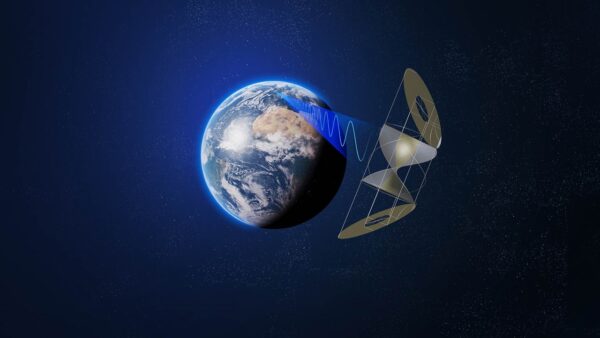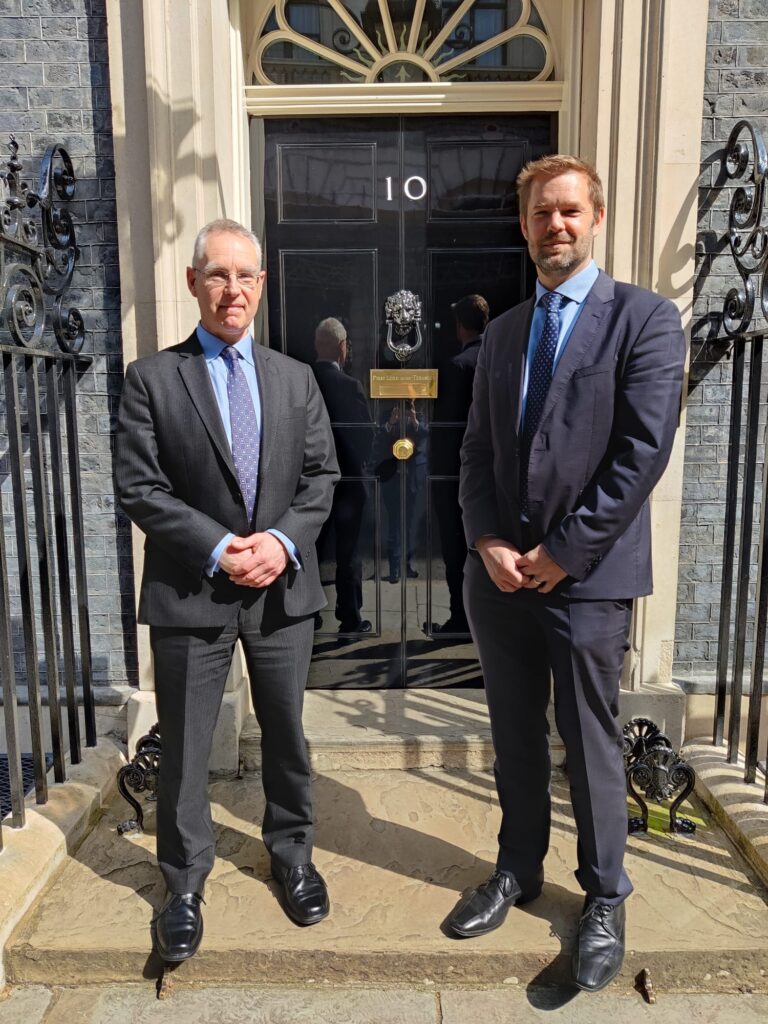 Back
Back
How one startup is fighting climate change using solar panels in space
Space Solar is on a mission to fight climate change using solar power from space, and brought its prototype transmitter to 🔥THE HEAT for its first ever demo.

BY JOE ROWAN, July 5 2024
THE HEAT, VOYAGERS.io’s first-ever climate-tech festival, took place on Friday September 20 2024 at the extraordinary Harwell Science and Innovation Campus in Oxfordshire.
THE HEAT is a hands-on, practical, mind-expanding, friendship-building, exploratory, curiosity-led, science-based, creative, artistic, participatory, decentralised, experimental, edgy, live, risky, urgent and unpredictable gathering of the talented people working on climate technologies. THE HEAT is not a conference. Don’t expect dull panels or awful coffee. Instead, come to make new friends, experience science in action, learn and share your knowledge, inspire and be inspired. Bring your most engaged and curious festival mindset.
Space Solar is on a mission to fight climate change using solar power from space, and brought its prototype transmitter to 🔥THE HEAT for its first ever demo.
🧠 Learn more about Space Solar in our article below and at SpaceSolar.co.uk
Could solar panels in space, beaming energy home by microwave, supply Earth’s power demands? That’s the ultimate goal of Space Solar — a Harwell-based company which plans to launch solar panels in orbit around Earth to send back reliable, clean energy 24/7. The team brought its prototype transmitter to THE HEAT for its first ever demo — a half-metre helix structure that can transmit power through the air.
In space, the Sun never goes down, and there are no seasons or weather — so energy provision is constant. Solar panels receive 13 times more incident energy than an equivalent panel in the UK, which matters as electricity demand grows. “If you look out to 2050 with increased electrification, from vehicles to green hydrogen, everything needs more and more clean electricity,” says Sam Adlen, Space Solar’s joint CEO.
Adlen and his co-founder Martin Soltau plan to maximise the Sun’s power in space by converting the energy from the solar panels into microwaves, which are then beamed down to Earth. These waves are in the range of 1-10 gigahertz, which ensures that the waves can pass through the atmosphere without being absorbed. Once they reach a vast antenna on the ground, the waves can then be reconverted to electricity and sent directly into the grid.

Gathering solar energy in space is not a new idea. It goes back to at least the early 1970s. And Space Solar isn’t the only tech company rising to the challenge — others include Solar Space Technologies (SST), Solaren and Virtus Solis. But unlike its competitors, Space Solar’s transmitters work across 360 degrees with no moving parts due to their helical structure. Most competitors’ space-solar systems only use geostationary orbit, with satellites located 36,000 km from Earth, thus requiring very large structures. Space Solar, however, has three product lines planned – a 30-megawatt system, a 180-megawatt system in a high-Earth orbit and a gigawatt-scale system in geostationary orbit, meaning that smaller structures can be used until the geostationary system is ready, currently planned for the mid-2040s.
It’s an ambitious plan — although along the way Space Solar intends to build revenue-generating businesses that commercialise its research into technologies such as terrestrial wireless energy transmission.
Still, how does one go about building solar panels in space? “It will be assembled by robots in space, but simple robots, putting together the equivalent of Lego building blocks,” Adlen says. “They’re designed to be put together, and the robots will be attached to the spacecraft.” The company predicts that 68 starship launches will be required for their gigawatt-scale system, but only one launch will be needed for their first megawatt systems. “The ways of operating in space are going to evolve significantly over the next ten years, and space solar power will be an interesting demand driver for that. Starships are going to transform space – 150 tonnes to low earth orbit,” Adlen says.
Before founding Space Solar in July 2023, Adlen built hardware for a NASA Mars mission during his PhD at Oxford University, supported the development of space businesses at the Satellite Applications Catapult, and consulted for aerospace company Finmeccanica. Soltau chaired the Western Aerospace Centre and ran programmes at the aircraft company Smiths Aerospace.
Support for space solar power is growing, in part thanks to Adlen and Soltau’s efforts. In 2020, they co-founded the Space Energy Initiative to bolster support for the development of space-based solar power in the UK, and over 90 organisations have signed up since. Soltau also recently directed a UK Government study into the viability of space-based solar power, which suggested that a 12-year development programme to produce gigawatt-scale power was possible and could create 143,000 job years in high-value new industries.
Space Solar’s 20-strong team operates out of Harwell Science and Innovation Campus in Oxfordshire, THE HEAT’s venue on September 20 2024. For Adlen, this has been the perfect place from which to grow the company. “The UK’s main space cluster is there, and it’s also got an energy cluster. And up the road in Culham, about half an hour away, you’ve got huge energy expertise around fusion. So, in terms of access to brilliant engineers in space and energy, it’s spot-on.”
They have already demonstrated that their technology works, transmitting power wirelessly to illuminate a sign ten metres away at Queen’s University Belfast. They have also partnered with Thales Alenia Space and National Grid and are currently raising a Seed funding round to accelerate their ambitious plans. “We’ve got a roadmap to go from there to ground-to-air power beaming in 18 months, in space at kilowatt scale in three years, and then importantly tens of megawatts in six years’ time,” Adlen says.
Space Solar brought its energy transmitter to THE HEAT and explained how it could transform energy provision.

Learn more about Space Solar at SpaceSolar.co.uk